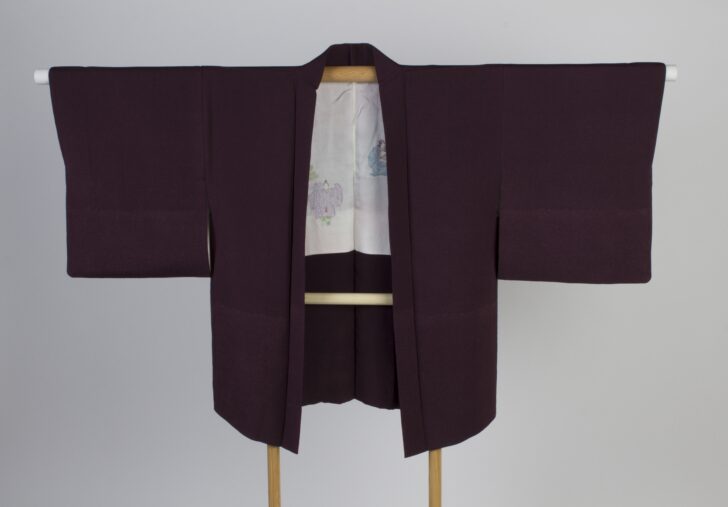Haori
Japanese

Description
Subject Matter:
Rouketsu is hand-painted wax-resist dyeing technique, also known as batique.
Chirimen refers to the unique wrinkled texture, also called crepe texture, created by a specific weaving technique. This texture is often used with traditional Japanese fabrics, often silk, wool, or synthetic fiber.
The Haori is a traditional Japanese hip or thigh-length jacket with elongated sleeves that is worn over the kimono. The Haori typically includes an interior lining with a design that is otherwise hidden from view when worn.The haori was originally part of a man’s formal attire, but in the nineteenth century, female entertainers in Edo (modern Tokyo) adopted it as a cloak for outdoor wear in mild weather. By the end of the century, married women of the upper class adopted black crepe silk haori with family crests for formal, public occasions. For much of the twentieth century, the haori has been the standard outerwear for a woman who dresses in a kimono outside the home.
Iromuji garments are plainly colored non-black kimonos that are often worn by young women at their graduation ceremony and mothers at family celebrations as well as non-celebratory occasions such as condolence visits. Iromuji garments are also favored at tea ceremonies since it does not disturb the atmosphere and for more casual activities such as going out in town.
Physical Description:
dark violet silk chirimen iromuji haori with white inner lining with interwoven chrysanthemums and rouketsu (wax-resist) dyed monogatari (story-depicting) figures.
Usage Rights:
If you are interested in using an image for a publication, please visit https://umma.umich.edu/request-image/ for more information and to fill out the online Image Rights and Reproductions Request Form.